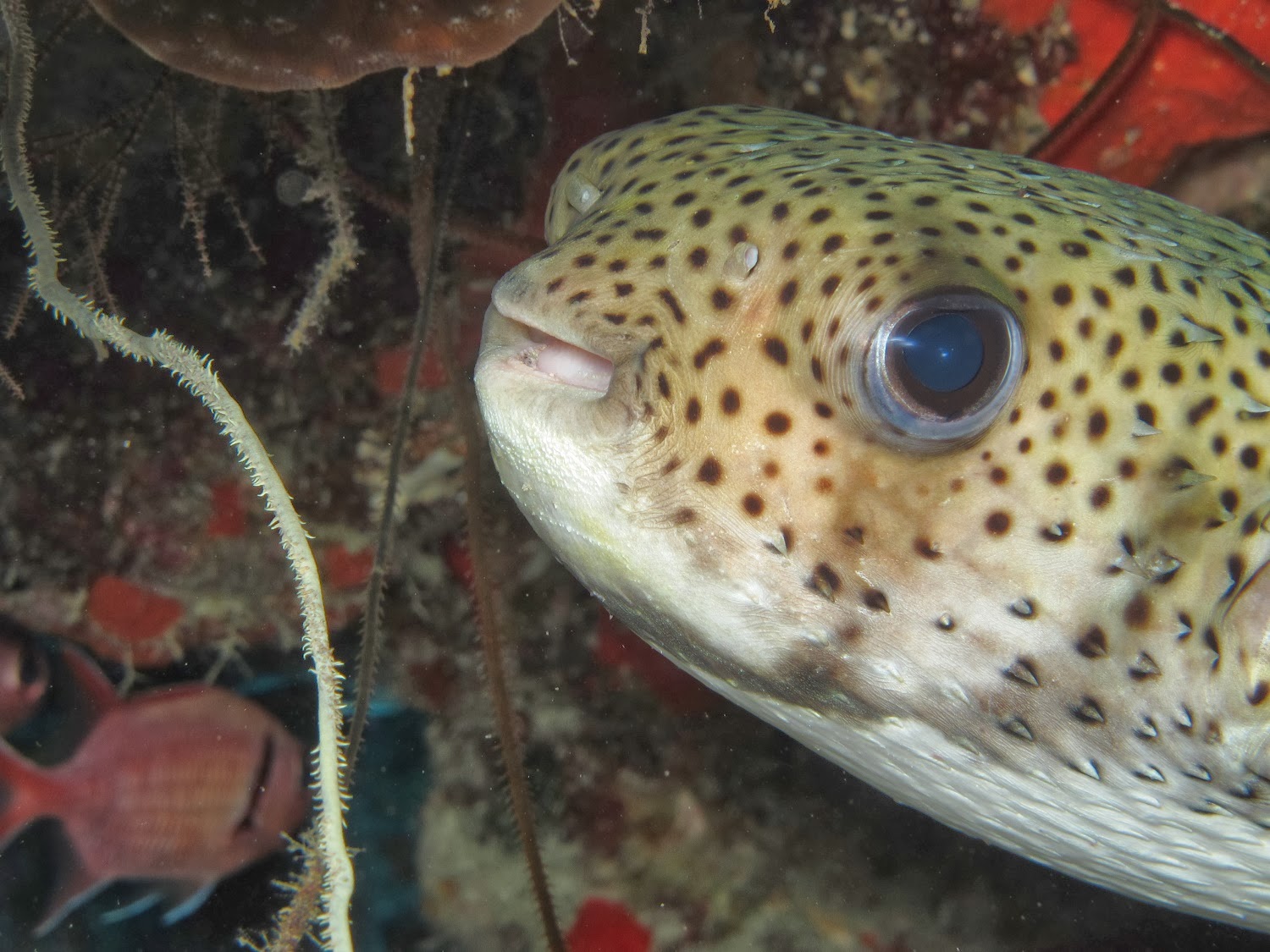Over the last 4 or 5 years, lionfish have become established on Bonaire's reefs. Lionfish lack natural predators, as they evolved in the Indo-Pacific region. However, an army of lionfish hunters (divers who have been trained to capture lionfish with spears) continues to remove lionfish from the reefs. As a result, we don't see lionfish on every dive. But they are still present, and won't ever be eradicated.
The smallest lionfish that I have seen was less than an inch long, and nearly transparent.
 |
| Less than an inch. |
As they grow, their pigment darkens. The fish in the photos below was about 3 inches long.
By about 5 inches, lionfish acquire their adult coloration pattern.
Although lionfish grow up to about a foot long, most of the ones that we see are fairly small. The big ones are being eaten in restaurants here in Bonaire.
These photos were taken at depths between 15 and 40 feet.

 ,
,
















































